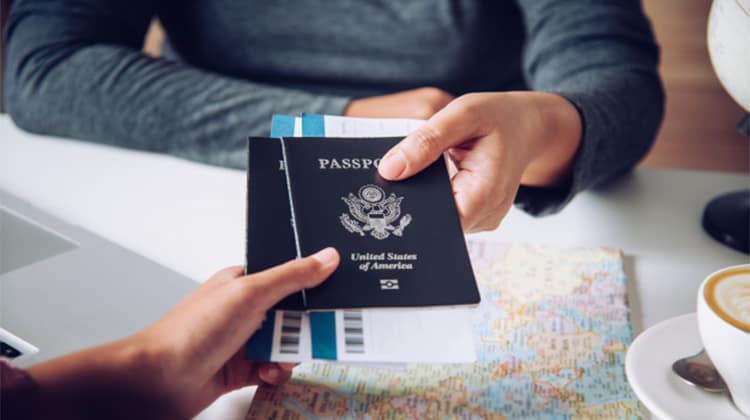Applying for a business visa is a common requirement for professionals, entrepreneurs, consultants, investors, and company representatives who need to travel abroad for meetings, conferences, negotiations, short-term work, training, or other business-related activities. While specific rules, documentation, processing times, and fees vary by country, most business-visa application processes follow a predictable sequence of steps and require similar types of evidence. This post walks you through the typical business visa application process, explains what documents and preparations are usually necessary, highlights common pitfalls, and offers practical tips to increase your chances of a smooth, successful application
Choosing the wrong type can lead to denied entry or penalties. When in doubt, check the destination country’s embassy or consulate site or contact their visa services.
- Review Official Requirements and Timelines
Every country’s embassy or consulate publishes official visa requirements, fees, and average processing times. Look for:
- Required documents checklist
- Application forms (online or paper)
- Fee schedule and payment methods
- Biometrics or interview requirements
- Processing times and priority/express options
- Where to submit (consulate, embassy, visa application center, or online portal)
Start this step early. Some countries require applications several weeks or even months in advance, especially for work-type visas or if additional internal approvals are needed.
- Gather Core Documents
Although specific documents differ across countries, business visa applications commonly require:
- Valid passport: Usually valid for at least six months beyond your planned stay and with one or more empty visa pages.
- Completed visa application form: Online or paper, signed as required.
- Passport photos: Meeting the country’s size, background, and recentness requirements.
- Proof of travel arrangements: Flight itinerary and sometimes hotel bookings (some consulates accept “planned” bookings or require a travel agent reservation).
- Invitation letter from host company: This is critical for business visas. It should typically state the host company’s name and address, the purpose and duration of your visit, who will cover expenses (if applicable), and an explicit invitation for business activities.
- Covering letter from your employer: Confirming your employment, position, purpose of travel, dates, and financial responsibility for the trip.
- Proof of ties to home country: Evidence you will return home (employment letter, property ownership, family ties).
- Proof of funds: Bank statements, company sponsorship letters or payroll slips demonstrating you can support yourself during the trip.
- Business registration of host company: Copies of host company’s registration, tax documents, or business license may be requested.
- Conference registration or event details: If attending a conference or trade show, provide registration confirmation or an event program.
- Travel insurance: Some countries require travel or medical insurance that covers the entire stay.
Additional documents can include criminal record checks, medical examinations, academic credentials, or prior visas and travel history. For work/permanent-type visas, expect far more extensive evidence and often labor-market or government approvals.
- Prepare Supporting Documents Carefully
Authorities often scrutinize the authenticity and completeness of documents. Tips:
- Use company letterheads and clearly signed letters with contact details.
- Translate any non-English documents into the destination language, using certified translations if required.
- Make clean, legible copies and bring the originals to any interview or when traveling.
- Ensure dates are consistent across documents.
- Provide clear itineraries and a concise purpose-of-trip explanation.
- Complete the Application and Pay Fees
Follow the embassy/consulate instructions exactly:
- Fill out online forms fully and truthfully, or complete paper forms in block letters.
- Attach required documents in the specified order.
- Pay the visa fee using the accepted method (credit card, bank transfer, or payment at a Visa Application Center). Keep receipts—some countries don’t accept cash.
- Book an Appointment, Provide Biometrics, and Attend an Interview (If Required)
Many countries now require applicants to visit a visa application center to submit biometrics (fingerprints and photo). Some consulates also require an in-person visa interview. Common points:
- Arrive with originals and copies of all documents.
- Be prepared to explain the business purpose and your ties to your home country.
- Answer truthfully and succinctly; consular officers are looking for clarity, credibility, and intent to return.
- If you represent a company, carry business cards and proof of corporate status if relevant.
- Wait for Processing and Track the Application
Processing times vary widely — from a few days for short-term tourist/business visas to several months for work/permanent permits. Many countries offer online tracking. During processing:
- Avoid making non-refundable travel commitments unless you accept the risk.
- Check your email and phone for any additional information requests; respond promptly.
Receive Decision and Collect Passport
When the visa is granted, the visa sticker or electronic authorization will be placed in your passport or linked to your passport number. If refused, you’ll typically receive a refusal letter explaining reasons and, in some places, instructions for appeal or reapplication. Common refusal reasons include incomplete documentation, insufficient ties to home country, or misrepresentations.
Prepare for Arrival and Comply with Entry Conditions
A visa allows you to travel, but entry is determined by immigration officers at the border. To avoid problems at entry:
- Carry originals of invitation letters, employer confirmation, and return ticket.
- Be clear and accurate about the purpose of your visit and intended stay length.
- Observe visa conditions (work restriction clauses, allowed activities, duration).
- Keep copies of important documents while traveling.
- If You Need to Extend or Change Status
If your plans change (longer stay, start working, or switching visa types), check the host country’s immigration rules. Extensions, change-of-status, or applying for work permits from within the country may be possible but often require specific filings and evidence. Acting early is critical—remain lawful to avoid penalties or deportation.
Common Pitfalls and How to Avoid Them
- Applying too late: Start early to accommodate delays or extra requirements.
- Using incorrect visa category: Confirm purpose and choose the appropriate visa; consult immigration guidance if unsure.
- Weak invitation letters: Use clear, detailed letters from the host with exact dates, business reasons, and sponsorship details.
- Insufficient proof of ties: Strengthen evidence showing you will return home—employment letters, property documents, or family ties help.
- Mismatched or contradictory documents: Make sure names, dates, and facts match across all paperwork.
- Forged or misleading documents: These are grounds for permanent bans in many countries. Always provide authentic documents.
- Overstaying or violating visa terms: This can lead to fines, deportation, or future visa bans.
Practical Tips to Improve Your Chances
- Use checklists: Create a tailored checklist based on official embassy requirements.
- Use professional assistance when needed: Reputable immigration lawyers, visa consultants, or employer HR departments can help with complex cases (e.g., long-term work visas).
- Maintain good travel records: Prior visas and a travel history showing compliance with immigration laws can strengthen applications.
- Be concise in letters: Invitation and covering letters should plainly explain the business purpose and responsibilities related to the trip.
- Keep finances transparent: Provide clear bank statements and evidence of sponsorship if the company is covering costs.
- Consider multiple-entry visas if you travel frequently: If available and you qualify, these reduce future administrative burden.
Processing Times and Costs — What to Expect
- Fees: Business visa fees vary from modest (tens of USD) to several hundred USD for longer-term or specialized categories. Additional service center fees may apply.
- Timeframes: Short business visas often take a few days to a few weeks. Work permits and residency-related visas can take months because of employer sponsorship, labor-market tests, or inter-agency approvals.
- Expedited processing: Some missions offer priority service for extra fees; availability varies.
Special Circumstances
- Schengen Area: A single Schengen business visa permits travel across many European countries but has strict short-stay rules (maximum 90 days in a 180-day period) and standardized documentation.
- United States: Business visitors typically use the B-1 visa or ESTA for eligible countries; the U.S. process can involve interviews and lengthy processing for some applicants.
- United Kingdom: Multiple business-related visa categories exist (Standard Visitor, Global Talent, Skilled Worker, Innovator). The right route depends on the activity and duration.
- Multi-country or short notice: If you need to visit multiple jurisdictions, check each country’s rules; sometimes a transit visa or separate visas are required.
- Visa waiver programs: Many nationalities have access to visa-free or visa-on-arrival travel for short business visits—confirm eligibility and conditions.
What Employers Should Know
- Employer role: Many employers must provide formal letters, sponsorship, proof of business activity, and in some cases, register as a sponsor with the host country.
- Budget for lead time and costs: Factor visa processing times and fees into travel planning.
- Compliance: Ensure employees understand the scope of permitted activities under business visas to avoid breaching immigration rules.
Conclusion
Although details differ by country, the typical business visa application process follows a clear path: determine the correct visa category, review official embassy requirements, gather and prepare supporting documents (including host and employer letters), complete the application and fees, attend biometrics/interview if required, wait for processing, and comply with entry and visa conditions once approved. Early preparation, accurate documentation, transparent financial evidence, and clear business justification improve your chances of success and reduce the risk of delays or refusals. For complicated cases—long-term work, intra-company transfers, or investment visas—consider professional immigration advice to navigate the additional legal and administrative steps.





